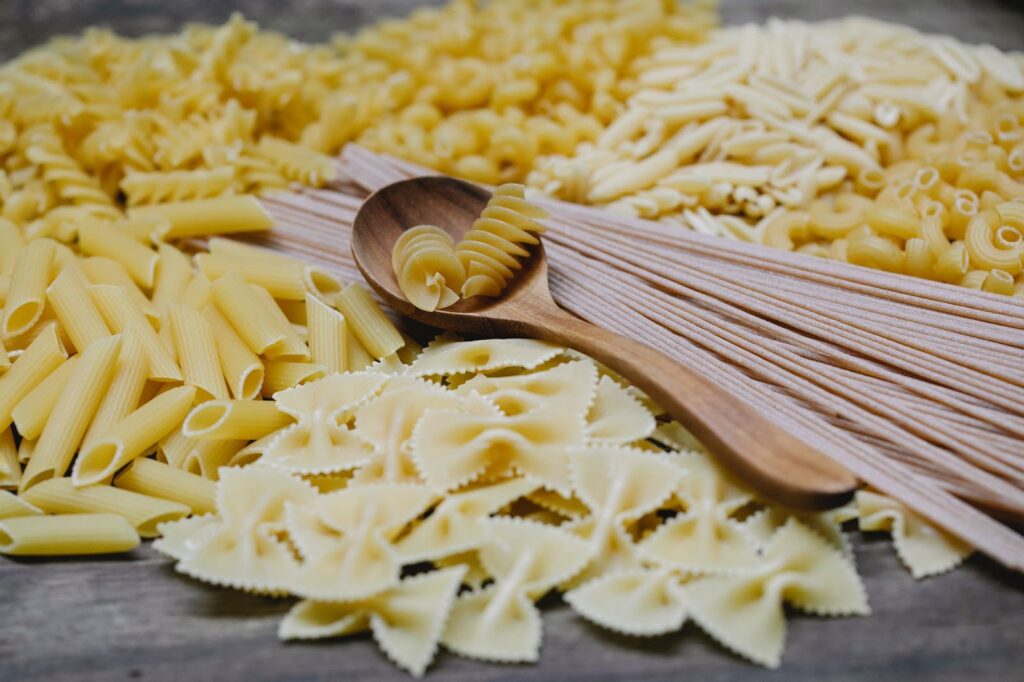
Spiralizing Tips
To understand what a spiralizer is and how to use it properly, you need to know the basics of the device. Types of Spiralizers and Benefits of using a Spiralizer are also important to know. In order to spiralize vegetables and fruits with ease and precision, mastering these sub-sections is key.
Understanding the Device
Spiralizers are ingenious kitchen gadgets that transform vegetables into healthy, delicious dishes. They are particularly popular among fitness enthusiasts and foodies. The device can be used to cut vegetables like beetroot, carrots, zucchini or sweet potato into thin ribbons, noodles or spirals in seconds. By using a handheld spiralizer or an electric spiralizer machine, you can create beautiful and nutritious meals with ease. The device has various blades that can create different shapes of cuts, including thick noodles and spaghetti-like strips. In addition to vegetables, spiralizers can also be used for fruits like apples or pears.
Apart from making meal preparation more fun and creative, the benefits of using a spiralizer include reducing carbohydrate intake and increasing vegetable consumption. This can lead to weight loss, better digestion and lower risk of chronic diseases such as cancer or heart disease. Whether you’re a seasoned cook or a beginner in the kitchen, investing in a good quality spiralizer is a wise decision. Don’t miss out on the chance to add some variety to your diet and impress your family/friends with colorful vegetable dishes. Start experimenting with different vegetables and see what tasty combinations you can come up with!
Spiralizers come in all shapes and sizes, just like the vegetables they spiralize (except for potatoes, let’s not get crazy).
What is a Spiralizer
When exploring the diversity of tools available for transforming vegetables, understanding the options under the umbrella of vegetable spiralizers can be overwhelming. Below is a brief breakdown of different types of spiralizing tools and their unique characteristics.
The following table provides a comparison between handheld, tabletop, and electric spiralizers including their features, pros, and cons.
| Types of Spiralizers | Features | Pros | Cons |
| Handheld Spiralizer | Small and portable; inexpensive; easy to use and clean | Cheap; compact; doesn’t require electricity | Limited blade options; not ideal for harder or larger vegetables |
| Tabletop Spiralizer | Sturdy base with counter-clamp; greater versatility with adjustable blades and thickness settings | More variation in blade type; greater capacity for volume | More expensive than handheld options |
| Electric Spiralizer | Automatic operation cuts down prep time and effort; less waste due to consistent cuts | Easy operation, can be more efficient when a large quantity is needed | More expensive upfront cost than other types of spiralizer |
It is worth noting that some models are made strictly for creating super-thin ribbons which are perfect for garnishes while others specialize in producing thicker strands or noodle-like shapes suitable in salad or pasta dishes.
Innovations in vegetable-cutting technology date back to the late 20th century’s “spiral slicer” craze which emerged on cooking shows as well as infomercials as part of healthy living trends. Among the early products were crude contraptions that looked like pencil sharpeners while others resembled corkscrews attached to battery-powered handles. From these humble beginnings come today’s crop of ever-evolving veggie-related devices matching modern-day demands from raw food enthusiasts and busy home cooks trying to shave precious minutes off kitchen prep time.
Spiralizing your veggies is like giving them a fancy haircut – they not only look great but also get healthier!
Benefits of Using a Spiralizer
For those who are now interested in getting more details about the benefits of using a Spiralizer, there are various advantages that come with it.
- Provides healthier meals by substituting traditional noodles and pasta with fruits and veggies
- Saves time and effort in preparation with its ease of use and quick produce
- Adds variety to everyday meals by exploring new recipes and dishes
- Encourages creativity in the kitchen for those who want to experiment with their food presentation
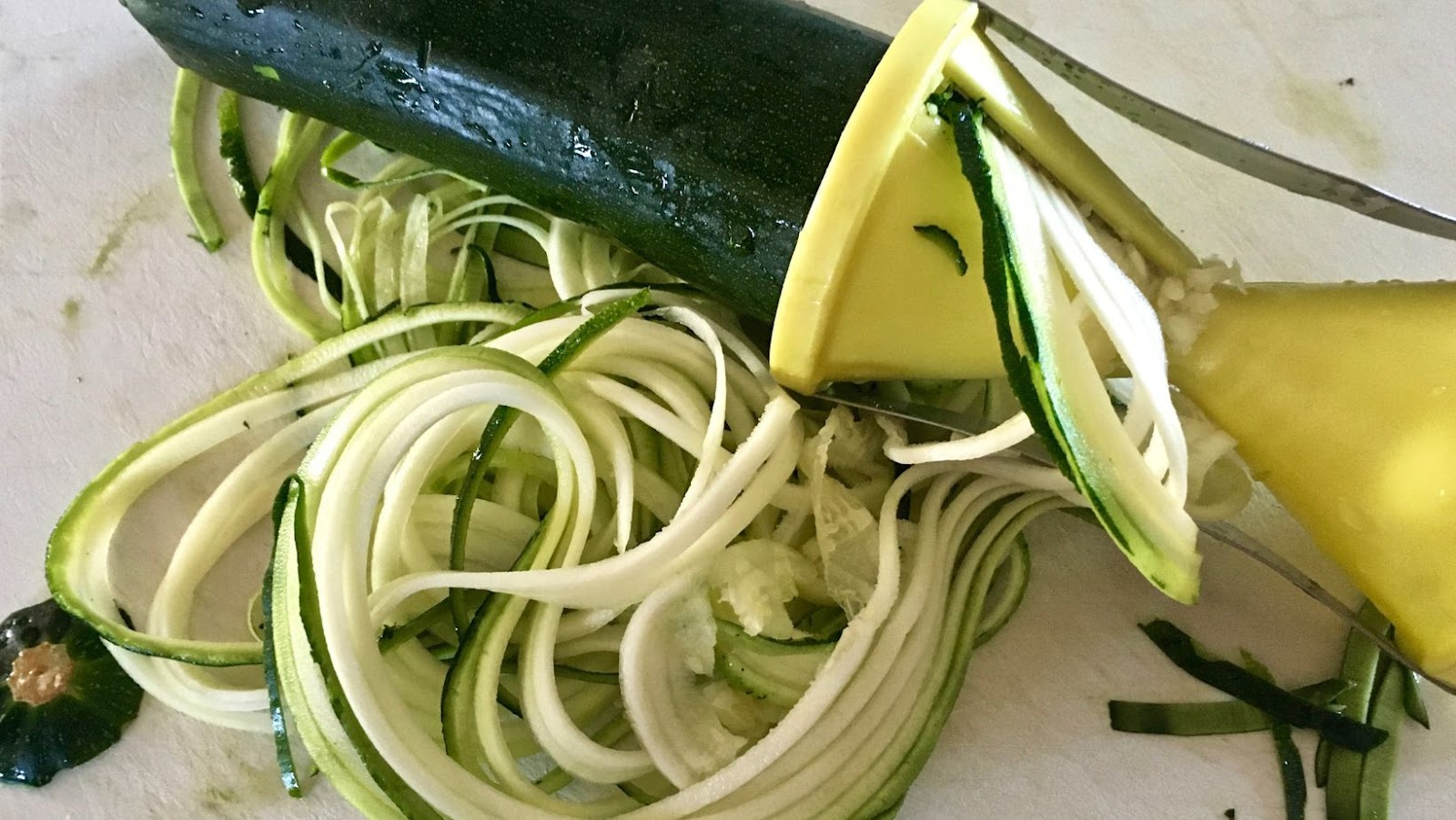
It is also worth noting that some spiralizers come with different blades, making it possible to create spiral cut vegetables in different shapes and sizes depending on one’s preference. In addition, using a spiralizer can be an exciting way to introduce children to eating more fruits and vegetables while still keeping the fun aspect in mealtime.
According to Healthline, “Spiralized vegetables such as sweet potatoes, beets, zucchini or butternut squash provide a larger surface area to absorb seasonings than their traditionally cut counterparts.” All these benefits make spiralizing an excellent investment for anyone looking for ways to incorporate more plant-based meals into their diet.
Get ready to twist and shout with these spiralizing techniques that’ll have you veggie-fying all your meals.
Spiralizing Techniques
To perfect your spiralizing skills and create beautiful, healthy meals, follow these techniques from the section ‘Spiralizing Techniques’ with a focus on ‘Spiralizing Tips(keyword:what is a spiralizer)’. Start by learning about ‘Choosing the Right Vegetables’ as well as ‘Preparing Vegetables for Spiralizing’, and then explore different ‘Spiralizing Techniques for Different Vegetables’.
Choosing the Right Vegetables
When it comes to preparing vegetables for spiralizing, there are certain factors that should be considered to ensure optimal results. Here’s what you need to keep in mind while selecting vegetables for spiralizing:
- Texture: Vegetables with a firm texture such as zucchini, sweet potato and carrot are ideal for spiralizing. Soft vegetables like tomatoes and cucumbers may not produce the desired results.
- Size: Choose vegetables that are uniform in size, without any bumps or irregularities. This will ensure even spiralizing and prevent jamming of your spirals in the machine.
- Shape: Vegetables with a shape that fits into the spiralizer mechanism easily work best. Consider cutting any large or awkwardly-shaped vegetables into smaller pieces before attempting to spiralize them.
- Freshness: It is essential to use fresh vegetables when preparing them for spiralizing. Older or wilted vegetables may not produce the same quality of spirals.
- Flavor: Some vegetables may have a strong flavor that can overpower or clash with other ingredients in your dish. Consider experimenting with different combinations to find what works best for you.
- Nutrition: Choosing nutrient-dense vegetable options is always recommended to ensure a balanced and healthy diet.
It’s also important to note that while many common vegetables work well for spiralizing, there are some limitations based on the type of spiralizer being used and personal preference. When selecting vegetables, don’t forget to consider how they will be cooked or served after being spiralized. Some types of sauces or dishes may require thicker or thinner noodles depending on the recipe specifications.
To get the most out of your vegetable choices and create delicious meals, take time to experiment with different options and have fun with your spiraling technique! Don’t miss out on all the delicious possibilities by limiting yourself to just a few basic vegetables. Get creative and explore the different textures, flavors and nutrition profiles available in a variety of vegetable options.
Get ready to turn your veggies into swirling works of art with these preparation tips – no need for a paintbrush, just a spiralizer and a sense of culinary creativity!
Preparing Vegetables for Spiralizing
Vegetable Preparation for Spiralizing Technique
To prepare vegetables for the spiralizing technique, it is essential to keep them fresh and firm. Slicing them before spiralizing can save time and provide better results.
Here are four easy steps to follow when preparing vegetables for spiralizing:
- Choose the right size: Selecting a vegetable that fits the feeding chamber of the spiralizer will prevent jamming or uneven cuts.
- Wash and Dry: Thoroughly clean the vegetable before spiraling to remove any dirt or debris. Let it dry completely before using to ensure smooth cutting.
- Cut the Ends: Remove both ends of the vegetables to create a flat surface for attachment. Cut off any protrusions like stems or leaves, which may hinder smooth cutting.
- Cut into manageable lengths: Cutting the vegetable into small pieces makes it easier to spiralize and reduces wastage. It also lets you control how long you want your spirals to be.
When slicing long vegetables like zucchini, hold them at both ends while applying pressure inwards towards the center with a steady motion. Spiralizing your vegetables requires care and attention, so keeping these tips in mind should give you perfect results every time.
A fun way to practice this technique is by hosting a Spiralizer party with your friends where everyone gets an opportunity to try different vegetables and techniques. The possibilities with spiralized veggies are endless, so try experimenting with various colors, sizes, textures, and shapes!
Warning: Spiralizing a carrot will make you feel like a pro, but spiralizing a butternut squash will make you question your life choices.
Spiralizing Techniques for Different Vegetables
Spiralizing is the technique of turning vegetables into noodles or ribbons to be used as a healthy substitute for pasta or rice. Here’s a six-step guide to master Spiralizing Techniques for your favorite veggies:
- Pick the right Spiralizer tool carefully.
- Choose vegetables that are firm, straight and uniform in shape.
- Trim the vegetable ends to fit your spiralizer.
- Securely attach the vegetable to the spiralizer, according to its instructions.
- Begin turning the vegetable through the blade, applying even pressure with one hand while cranking with another.
- Stop when you reach near to the end of the vegetable—leaving ½ inch at least.
Another handy tip for this technique – pick root vegetables like sweet potatoes or turnips that may require pre-cooking before cutting into spirals. Happy Spiralizing!
Did you know? The first-ever spiralized recipe was discovered in Japan during World War II when cooks had no choice but to improvise noodles out of potatoes! They eventually called it ‘kamaboko’, which means ‘fish cake’, and it was not until years later that this Japanese culinary delight became popular worldwide as we today know it as “Spiralizing”.
Ready to spiralize your way to healthier meals? These tips will make sure you don’t end up with a piece of produce resembling a wad of dental floss.
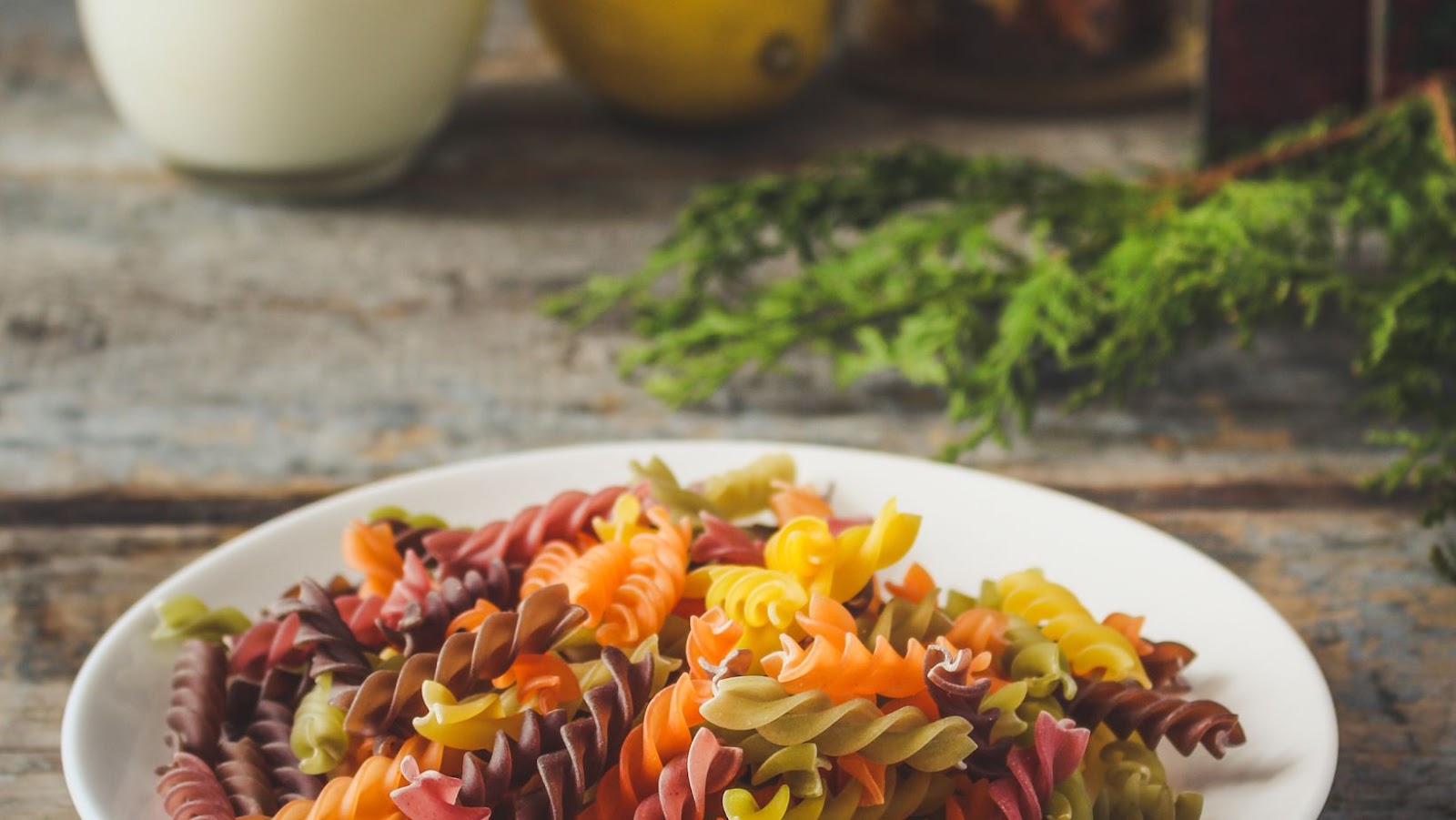
Tips for Using a Spiralizer
To make the most out of your spiralizer, ensure safe usage, hassle-free maintenance, and creative recipe ideas with our Tips for Using a Spiralizer with Spiralizing Safety Tips, Maintenance and Cleaning Tips, and Creative Recipe Ideas. By following these sub-sections, you can utilize the potential of your spiralizer to the fullest and enjoy delicious and healthy meals.
Spiralizing Safety Tips
When operating a spiralizer, ensuring safety is crucial. Here are five essential tips to keep you safe and avoid accidents:
- Always read the user manual before using the spiralizer.
- Use a sturdy cutting board and secure it with a non-slip mat.
- Apply gentle pressure when pushing the vegetable into the machine and ensure that your fingers remain at a safe distance from the blades.
- Keep an eye on where the blades are positioned and use caution when removing them or cleaning out the blade compartment.
- Never leave the spiralizer unattended while in use.
It’s important to note that spiralizers come in different models, sizes, and blade types. Certain precautions may vary depending on what kind you’re using.
Apart from these safety tips, it is also vital to clean your unit after every use correctly. Ensuring food particles don’t remain lodged within crevices or blades reduces any risk of bacterial growth.
According to healthline.com, “Spiralizing your vegetables can increase their bioavailability up to 30%. This means that more nutrients will be absorbed by your body”.
Spiralizers may make veggies look sexy, but they still need a good scrubbing to keep them from getting funky.
Maintenance and Cleaning Tips
For keeping your spiralizer in pristine condition, it’s crucial to follow proper Maintenance and Cleaning Practices.
- Always unplug the machine before cleaning it.
- Remove and wash all removable parts immediately after use.
- Use a dish brush or toothbrush to remove any food stuck in the blades.
- Avoid cleaning the base with soap or water. Instead, wipe it down with a damp cloth.
- If necessary, use a scrub pad or baking soda paste for tough stains on plastic parts.
It’s also essential to check if all components are dry before storing them and avoid using abrasive materials or harsh chemicals; it may damage your Spiralizer. Finally, make sure to keep routine maintenance in mind by checking for wear and tear periodically.
With these simple yet effective tips, you can extend the life of your Spiralizer while ensuring its functionality. Start following this maintenance routine today and enjoy your meals worry-free!
Spiralize your way to healthy and Instagram-worthy meals with these creative recipe ideas.
Creative Recipe Ideas
Using a Spiralizer can help you create unique and unconventional dishes that are not only healthy but delicious as well. If you’re looking for inspiration on how to make the most of your spiralizing, here are some exciting recipe ideas that you can try out in your kitchen.
| Recipe Idea | Description |
| Zucchini Noodles with Pesto Sauce | Use the Spiralizer to make zucchini noodles and toss it with homemade pesto sauce for a refreshing summer lunch. |
| Sweet Potato Fries | Cut sweet potatoes into thin strips using the Spiralizer and bake them until crispy to create a healthier alternative to regular french fries. |
| Cucumber Spirals Salad | Create an eye-catching salad by spiralizing thinly sliced cucumbers and tossing it with fresh herbs, olive oil, and lemon juice. |
Another creative way to use your Spiralizer is to make vegetable noodles that can be used in place of traditional pasta dishes. By doing so, you not only add more nutrients to your meal but also cut down on calories.
To get the best results when spiralizing, make sure to choose firm vegetables that are not too thick or too thin. It’s also essential to invest in a good quality Spiralizer that can handle different types of produce. Finally, experiment with various recipes and seasonings until you find the perfect blend of flavors.
Don’t miss out on creating exciting meals using your Spiralizer. Try out these recipe ideas today and explore new ways of cooking with fresh produce. Be sure to use your spiralizer responsibly – no spirals were harmed in the making of this meal.
Best Practices for Spiralizing
To master the art of spiralizing veggies with a spiralizer, and make your meals more interesting and aesthetically pleasing, you need to follow the best practices. In order to do that with ‘Spiralizing Tips’ and its sub-sections as a solution, you should learn how to use spiralized vegetables in recipes, store spiralized veggies and how to reheat them without losing their texture and flavor.
Using Spiralized Vegetables in Recipes
Spiralized Vegetables are a great way to incorporate more vegetables in your meals. They can be used in various recipes to make them healthier and more visually appealing.
The following table showcases different ways to use Spiralized Vegetables in Recipes without compromising on taste or nutrition value:
| Recipe Type | Spiralized Vegetable Used |
| Pasta | Zucchini |
| Noodle Dish | Sweet Potato |
| Salad | Cucumber |
| Soup | Butternut Squash |
| Side Dish | Carrot |
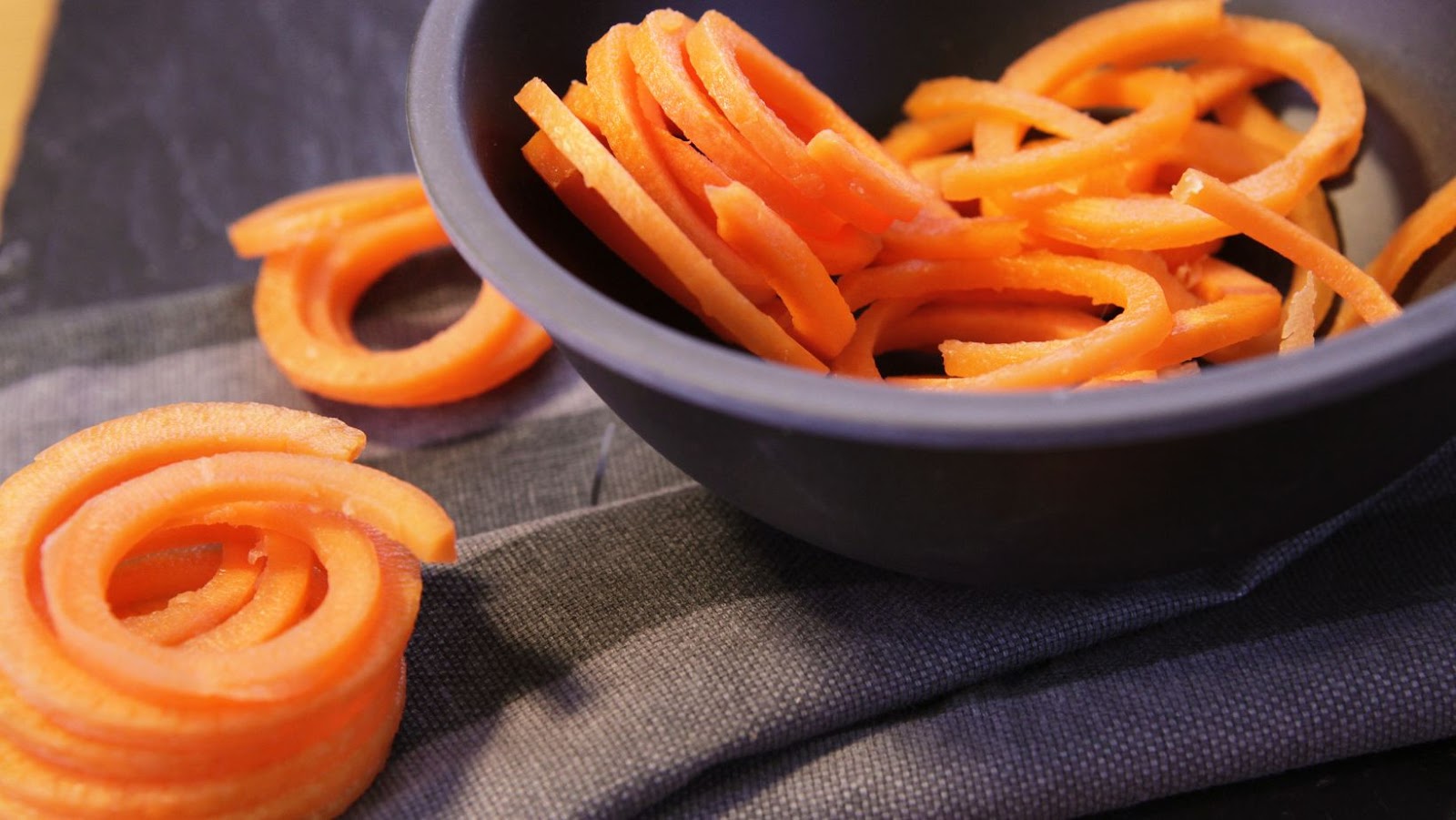
Did you know that spiralizing vegetables opens up new culinary possibilities? It makes a salad more interesting and gives soup some texture. You can blend spiralized sweet potato, eggs, and spinach to make an omelet with a twist.
One time, my friend Emily gave me a recipe for spicy butternut squash soup that called for spiralizing the squash instead of chopping it. The final product had a unique texture and looked impressive when served on the table. Get your spiralized veggies in line with these storage tips, because nothing says ‘culinary chaos’ like a tangled mess of zoodles.
Storing Spiralized Vegetables
When dealing with Spiralized Vegetables, it is important to know how to store them properly so that they stay fresh and edible for longer periods. The following are some tips on the best practices for storing Spiralized Vegetables.
- Store in airtight containers – To prevent moisture from building up, transfer your Spiralized Vegetables into a container with an airtight lid.
- Keep refrigerated – Keep your Spiralized Vegetables in the refrigerator as soon as possible after preparing.
- Label your containers – Labeling can help you know what kind of vegetable is inside each container and when you packed it.
In addition to these tips, you should also be aware that Spiralized Vegetables have different shelf lives depending on the kind of veggie. For example, zucchini noodles may last up to 5 days when refrigerated while Sweet Potato noodles can only be expected to last 2-3 days.
To extend their lifespan further, you can also keep your spiralized veggies in a damp cloth or paper towel before placing them inside their airtight containers. This will help retain their freshness and crunch. By following these best storage practices, you can enjoy your Spiralized Veggies for days without having to worry about spoilage or loss of nutrients. Revive your spirals with these reheating tips, so you can enjoy them again without feeling like a wilted veggie yourself.
Tips for Reheating Spiralized Vegetables
Reheating Spiralized Vegetables: A Professional Guide
If you’re reheating spiralized vegetables, some essential tips can ensure that your dish tastes as fresh as possible. Follow the guide below to reheat your spiralized veggies with optimal results.
- Heat it in the Oven: Preheat the oven to 375°F and place your leftovers on a baking sheet. Warm up the dish for 10-15 minutes, dependent upon how chunky is your vegetables.
- Use Microwave Friendly Containers: While reheating your vegetable dishes, always opt for microwave-safe containers. Avoid reheating packets containing metal or plastic lids as they can melt over high temperature that might attract health hazards.
- Add Some Water: Before microwaving leftovers, sprinkle some water over them while turning to make sure they don’t dry out and maintain their fluidity.
- Make It Crispy Again: To overcome sogginess, place your warm-up veggies into an open-air fryer basket for a few seconds or so until it gets crispy again.
Operating these steps will help you enjoy crunchy spiralized vegetables whenever you get any leftovers. Keep in mind that the preparation method will solely depend on that dish. The texture of different types of vegetables alters with each reheating method – always keep this in mind to achieve optimal outcomes without losing its flavors and nutritional value.
Spiralizing was first introduced back in the 1970s when Japanese chefs were trying to offer new ways of presenting food creatively to visitors; later on, it became popular worldwide because the approach saves time and cultivates minor quantities of waste while maximizing production efficiency. From tangled noodles to flying vegetable shreds, we’ve got you covered with the ultimate guide to spiralizing troubleshooting.
Troubleshooting Common Spiralizing Issues
To troubleshoot common spiralizing issues with your spiralizer and ensure perfectly spiralized vegetables, check out these sub-sections: how to fix spiralized vegetables that are too thin or thick, addressing spiralizing errors, and tips for avoiding spiralizer clogs. These quick solutions will help you overcome any issues you face while spiralizing your veggies.
How to Fix Spiralized Vegetables That are Too Thin or Thick
When spiralizing vegetables, they can sometimes become too thin or thick, resulting in an undesirable texture and taste. To fix this issue, follow these steps:
- Adjust the spiralizer blade – if the vegetables are too thin, try using a thicker blade. If they are too thick, use a thinner blade.
- Choose the right vegetable – some vegetables are better suited for spiralizing than others; try using zucchini or sweet potato instead of carrots or beets.
- Use consistent pressure – apply consistent pressure when spiralizing to achieve uniform thickness.
Failing to address this issue can lead to uneven cooking and lackluster taste. Be sure to adjust your technique as needed for optimal results.
Did you know that the first documented evidence of spiralized vegetables dates back to Japan in the 700s? The traditional Japanese dish called kanten was made by hand-shredding seaweed into thin noodles, pre-dating the modern-day spiralizer by centuries.
Who needs therapy when you have a spiralizer to help you work out all your issues?
Addressing Spiralizing Errors
When spiralizing fruits and vegetables, errors may occur, leading to frustration and disappointment. To overcome these issues, one needs to adapt their approach and address spiralizing errors using effective techniques.
Here’s a 5-step guide to addressing spiralizing errors:
- Ensure that the produce is fresh and firm.
- Choose the right blade size for the produce.
- Place the veggie or fruit correctly on the spiralizer.
- Avoid applying too much pressure when pushing the produce onto the blades.
- Clean your spiralizer thoroughly after use for future success.
It is also crucial to ensure that the blade remains sharp while using a Spiralizer. Dull blades can result in uneven cuts, making it harder to achieve good results from your spiralizer. To further improve your experience while using a Spiralizer, investing in high-quality equipment could make all the difference.
Interestingly, a long-forgotten kitchen gadget called “The Spirolette” first introduced handheld vegetable slicers and inspired today’s modern-day kitchen tools like Spiralizers. Unclogging your spiralizer is like unclogging your mind – sometimes you just have to take a deep breath and shove it all through.
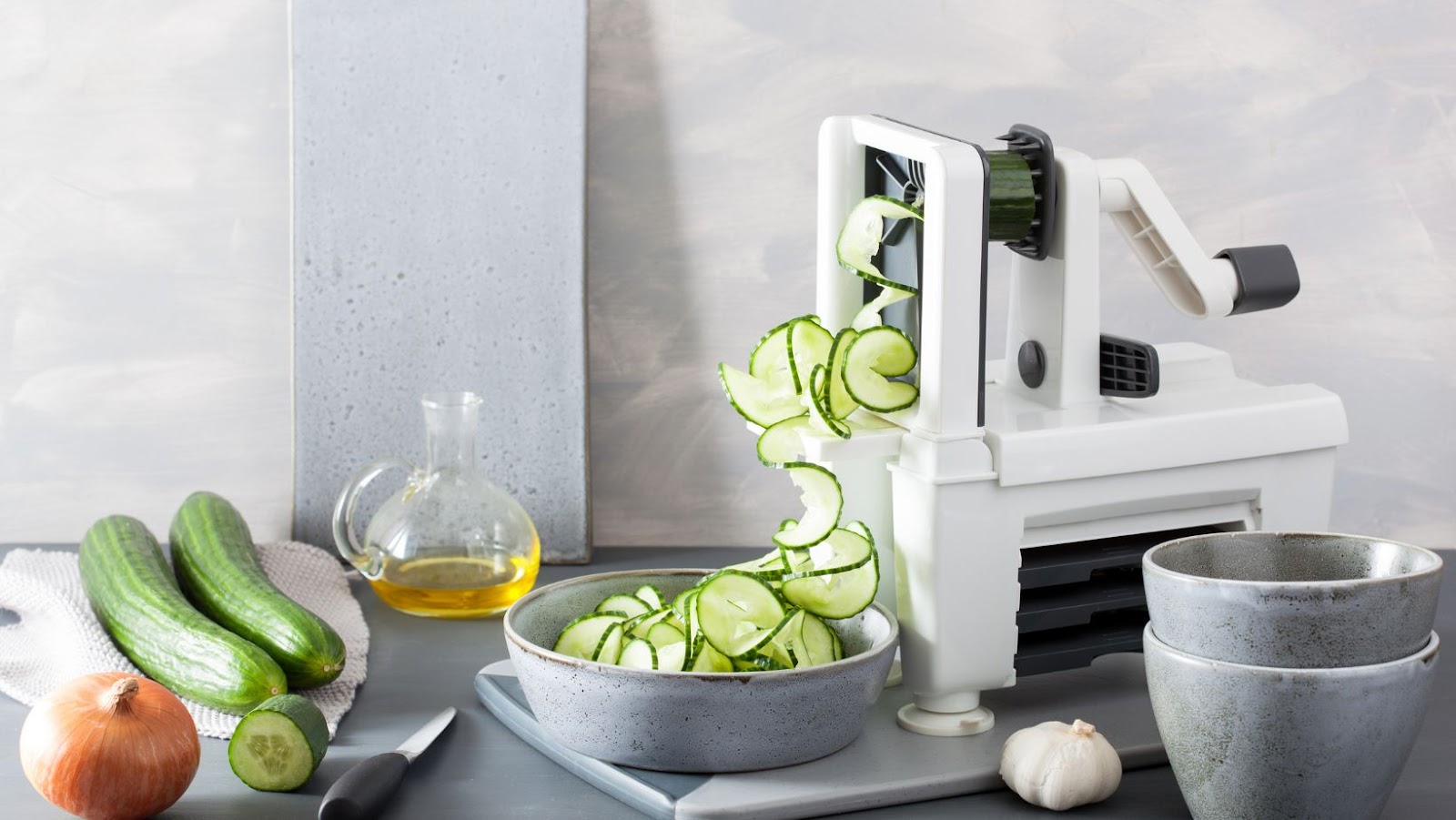
Tips for Avoiding Spiralizer Clogs
To prevent blockages when using a spiralizer, here are some helpful strategies:
- Use the correct blade for the vegetables that you’re processing: Each vegetable has its own unique texture and density, so make sure to use the appropriate blade for optimal results. Some blades work best with softer vegetables, while others may be better suited for firmer options.
- Prepare your produce properly: Before feeding your veggies into a spiralizer, ensure that they are washed thoroughly and trimmed to fit appropriately into your gadget. This will help in minimizing the chances of an obstruction.
- Avoid Twisted Vegetables: When positioning your vegetables onto the vegetable holder, be sure it is straight-lined with the blade. It ensures uniform cuts.
On top of these techniques to avoid clogs, it’s essential to keep an eye on your appliance’s maintenance. Keeping it clean and replacing worn parts helps maintain optimum functionality.
Sometime in my early days of using a spiralizer, I was creating zoodles using larger squashes like butternut squash, which proved too heavy to put through; the machine seized up as a result leading to frustration and wasted time. Repeated attempts yielded similar results until I realized there were specific recipes suitable for particular types of vegetables. Don’t be a vegetable, embrace the spiralizing trend- it’s perfect for low-carb, gluten-free, and paleo diets!
Spiralizing for Specific Diets
To make spiralizing work for your specific dietary needs, turn to tips and recipes tailored to your preferences with the section “Spiralizing for Specific Diets” with the sub-sections “Gluten-Free Spiralizing Options,” “Low-Carb and Keto-Friendly Spiralizing Recipes,” and “Spiralizing for Vegan and Plant-Based Diets” as solutions.
Gluten-Free Spiralizing Options
For those seeking gluten-free options, spiralizing can be a great substitute for traditional pasta and noodles. By using vegetables, such as zucchini or sweet potatoes, one can create a variety of dishes suitable for gluten-free diets. Gluten-Free Spiralizing Options
| Vegetable | Dish Ideas |
| Zucchini | Zucchini noodles with tomato sauce |
| Sweet Potato | Sweet potato curly fries |
| Carrots | Carrot spaghetti with pesto |
| Cucumber | Cucumber ribbon salad with sesame dressing |
In addition to being gluten-free, spiralizing also provides a fun and creative way to incorporate more veggies into your diet. Try experimenting with different vegetables and sauces to keep things interesting. Don’t miss out on the nutritional benefits and delicious flavor of spiralized dishes. Give it a try and see how it can enhance your gluten-free meals. Who needs pasta when you can spiralize your way to a low-carb and keto-friendly meal that will have you saying ‘Holy zucchini!’
Low-Carb and Keto-Friendly Spiralizing Recipes
Spiralizing vegetables is a popular way of incorporating more vegetables into a diet, especially for those on low-carb and keto diets. Using a spiralizer, one can turn a variety of vegetables into noodle-like shapes that can be used in place of traditional pasta. Here are some spiralizing recipes that are low-carb and keto-friendly:
| Recipe | Description |
| Zucchini Noodles with Meat Sauce | Ground beef cooked in tomato sauce over zucchini noodles |
| Cucumber Salad with Spiralized Radish and Carrots | Thinly sliced cucumbers tossed with spiralized radish and carrots in a light vinaigrette dressing |
| Butternut Squash Noodles with Pesto and Grilled Chicken | Spiralized butternut squash noodles topped with pesto sauce and grilled chicken |
When it comes to spiralizing for specific diets, there are many options beyond just low-carb and keto. For example, those on a gluten-free diet can use spiralized vegetables as a substitute for pasta or bread in various dishes. Similarly, vegetarians and vegans can utilize spiralizers to create plant-based versions of their favorite dishes.
Research suggests that consuming more vegetables can improve overall health and reduce the risk of chronic diseases. One study found that those who ate seven or more portions of fruits and vegetables per day had significantly lower risks of dying from cancer and heart disease compared to those who consumed less than one portion per day.
So if you’re looking for new ways to incorporate more veggies into your diet, consider investing in a spiralizer and trying out some creative recipes! Who needs meat when you can spiralize your veggies into deliciously satisfying noodles for your plant-based diet?
Spiralizing for Vegan and Plant-Based Diets
Spiralizing vegetables is an excellent technique for enhancing plant-based and vegan diets. Vegetables such as zucchini, sweet potatoes, and cucumbers can be transformed into pasta-like strands with a spiralizer tool.
| Column 1 | Column 2 |
| Examples of Vegetables | Spiralized Dish Ideas |
| Zucchini | Zucchini Noodles with Marinara |
| Sweet Potatoes | Sweet Potato Curry Bowl |
| Bell Peppers | Colorful Spiral Stir Fry |
It’s important to note that spiralizing vegetables isn’t just about creating new and exciting dishes, but it can also add more nutritional value to meals. Spiralized veggies are a great source of fiber, vitamins, and minerals. For a unique twist on vegan cuisine, try adding spiraled root vegetables to soups or casseroles. And for those following specific diets such as Paleo or Whole30, spiralizing can be an excellent substitute for traditional noodles made with wheat or other grains.
A friend once told me about how she was able to improve her eating habits by incorporating spiralized vegetables into her diet. She found it easier to prepare healthy dishes and even enjoyed experimenting with different vegetable combinations in her spiralizer.




